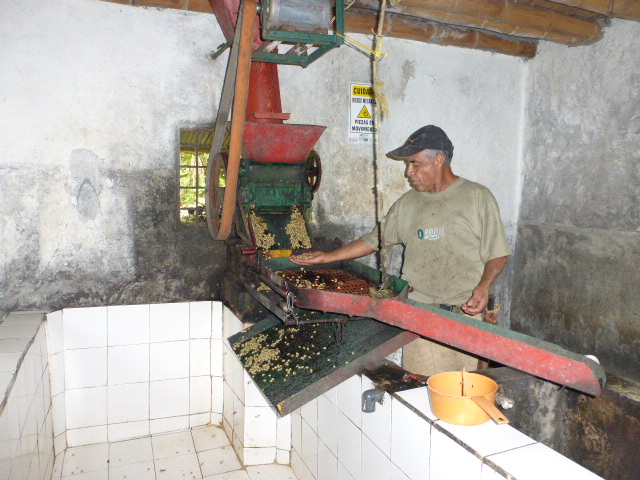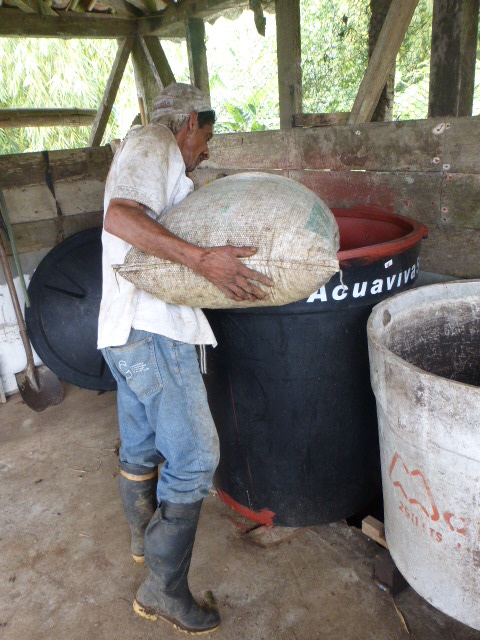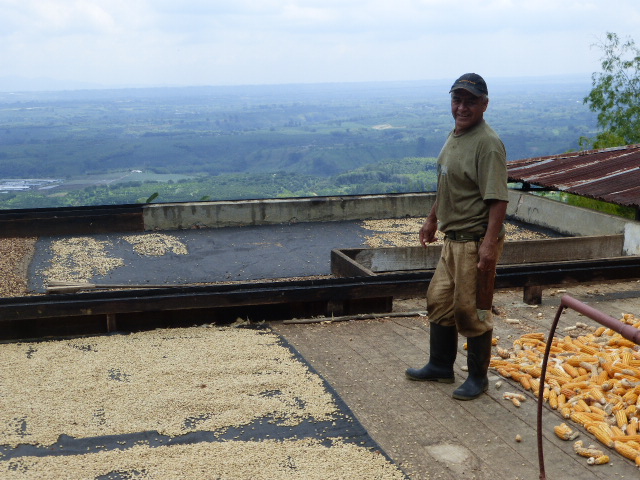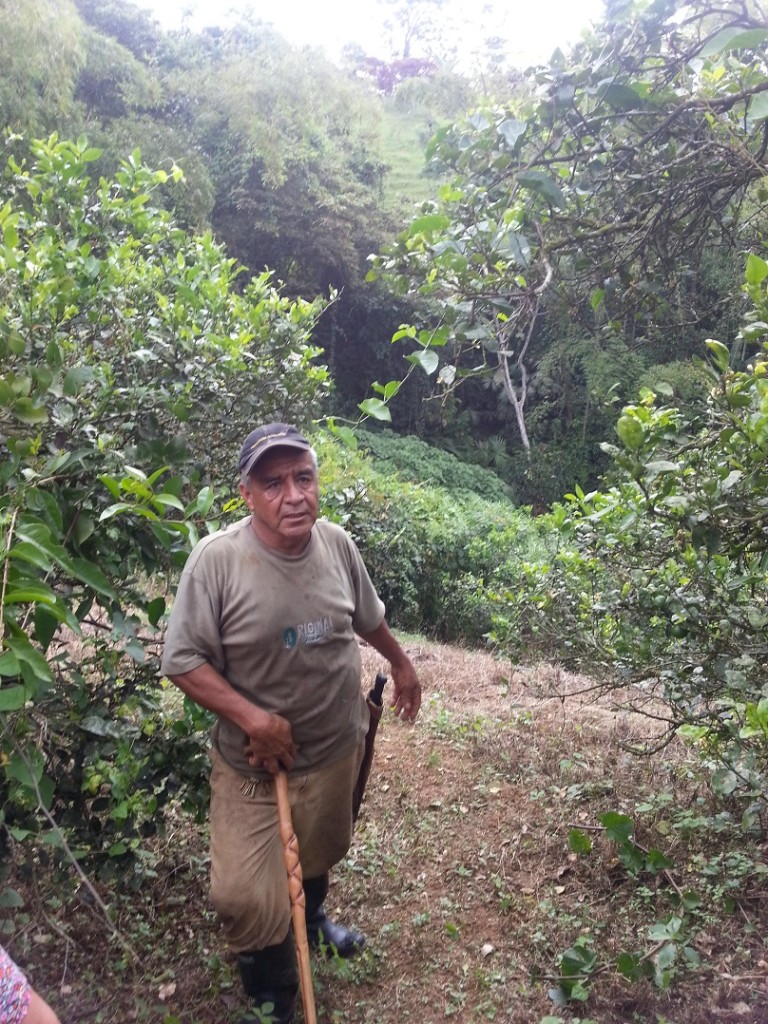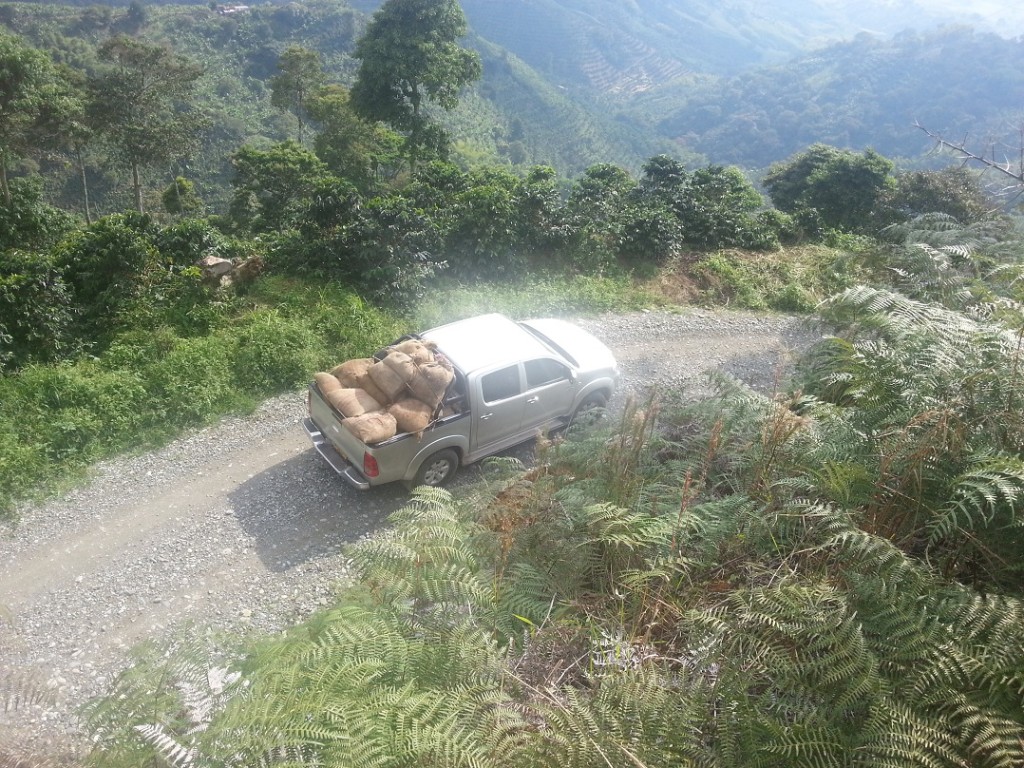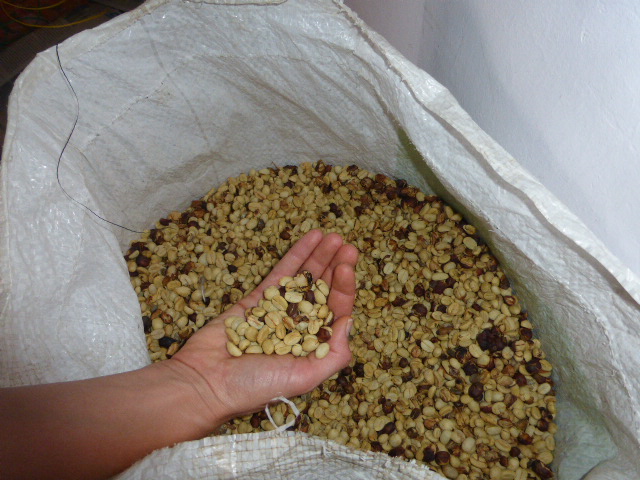….achieve adding recognition and value to the coffee worker, the culture and passion of the coffee producers through a connection between the travelers and the coffee farmers –
Experiencia Cafetera
A Brief Background to the Coffee Industry in Colombia
When I was told that a student was working on a social project in the little mountain town of Buenavista in the coffee region of Colombia I jumped at the chance to travel with him to a coffee farm.
Juan who is from Bogota and studying at university in Argentina has been researching the coffee industry in this region of Colombia and trying to improve the lives and standards of the local farmers; but the coffee industry is complicated and the lives of the farmers are tightly controlled.
Currently the Colombian Coffee Federation (the Federacion Nacional de Cafeteros de Colombia) has to be involved in all aspects of the industry. Farmers generally don’t get a fair price for their produce because agricultural products cost too much and competition from other countries undercuts their efforts. The Federation supplies the coffee seeds and it has a monopoly on the pesticides which they must use (seeds are genetically modified).
The President of Colombia chooses the President of the Federation and the two are tied closely together. Santos, the current president of Colombia was once President of the Federation, but the coffee growers are not represented by Juan Valdez either. The familiar face of Colombian coffee, Juan Valdez is purely a trademark; a chain with its logo and US marketing whose large profits generally sidestep the farmers who produce the beans.
There was once a pact between Colombia, Brazil and Central America and quality and price were agreed with EU involvement. This helped to keep the prices high but it was eliminated at the end of the 1980s when Colombia opened its trading market.
Under the Free Trade Agreement, Colombia is more liberal but this means that competition from other countries, for instance, imports of corn, maize, beans and coffee – undercut the Colombian farmers because the foreign companies pay no or substantially lower taxes on imports from countries such as Peru and Ecuador.
The Federation promotes quantity but the farmers would prefer to go for quality, growing specialist brands and selling directly to the consumer via local and regional outlets or the internet.
But until recently they were bound to the sommeliers who taste the coffee but who are in turn bound to the Federation. The sommeliers often do not provide fair feedback and will sometimes lean towards those that will accept less pay – favouritism and corruption were rife and cafiteros were penalised if they attempted to sell to private companies.
As well as the bureaucratic problems the farmers are also up against nature with the weather, fungus and insects all taking their toll. At the time of writing a current cold spell in Brazil and a fungal attack in Central America have reduced the competition enabling Colombia to currently profit, but they are dependent on others misfortune and in 2 years time it is expected that prices will fall again.
Farmers also suspect that here in Colombia insects were imported in order to sabotage their market share. There is a solution to the plague insect which could be to import a second harmless insect to eat the eggs of the first but that is a long term solution. Some of the plantations have 80 year old bushes that are very susceptible to attack but trees take time to become established.
Historically, there were many trees on the coffee fields which provided shade and there was better coffee – but deforestation in order to plant more coffee trees means more intensive farming and the need to use more nutrients, but luckily more farmers are realising the importance of trees and are replanting plantains to provide shade and mulch.
Meeting the coffee farmer
We toured farmer Jorge Agredo’s land and we saw his coffee bushes and learnt about the labour intensive process of picking and processing the beans. Jorge was born in the country but moved to Popayan when he was 18. He worked for 17 years in the city in the steel industry but he and his wife Marie Luz later moved back to the farm which was in his wife’s family where they have been for 22 years. They have 2 grown up children who have moved away.
Jorge explained how, in his opinion, they used to live better in the past when Maria Luz’s father got good money for his crops. Now it is difficult to support ones family as a coffee farmer – they need to be self-sustaining and to diversify – the plantains crop every month and the coffee twice a year.
Jorge and Maria Luz’s farm is organic and it has a special licence. They produce tasse limpiar – clean cup coffee which is more expensive and uses fewer pesticides although the seeds have been genetically modified to be resistant to fungus. Arabica beans have a better flavour but are not so cost effective – they are hard to pick and not resistant to disease or insect attack.
Two additional labourers people work on Jorge’s farm. It is very hard to find labourers who may be paid either a salary or per kilo picked. The beans are harvested twice a year and it is physically difficult work. Picking is done by hand on steep slopes in strong sunlight. Jorge’s farm produces 3000 kilos of beans per year which are spread out and dried on the roof. He also operates a clear ground policy in an effort to combat the insects and the ground has to be cleared (by hand) every 25 days.
Despite the obvious hardships of life in the country I asked Jorge if he ever regretted leaving the city and returning to a country lifestyle. He answered with one word – a resounding no – and this is where Juan and his project come in.
Coffee and eco-tourism
When I visited, there were no hostels or hotels in Buenavista or in the other surrounding towns or villages. Locals are shy and believe that travellers demand posh hotels and great experiences, but where there are tourists there will also be a market for the beans at source, bypassing the Federation. Juan believes that if the farmers can cooperate and roast their own beans they can sell a quality product direct to the market. He hoped to set up coffee tours under the eco-tourism umbrella with people staying in the area for an authentic experience.
And now, one year on, there has been massive progress. There is a whole fledgling business growing in the region based around coffee, the coffee farmers and the stunning scenery. The mission statement of Experiencia Cafetera sums the ethics of the company up –
Mission: Open ways of cultural and intellectual exchange between local communities and inhabitants of the towns through experience based tourism. Give the coffee its real value through direct commercialization and quality conscious markets.
Click the link to see the short video about the area and the project. I have to admit that I felt quite ‘homesick’ when I saw again these pictures of the mountain communities that I loved so much in Colombia. link to Experienca Cafetera video
To sum up
Colombia has gone through much enormous social change in recent years but the people’s lives especially in the countryside are still hard. Before we left the coffee farm I asked Jorge if the security situation has changed for the coffee farmers? He didn’t think that it had, but then he explained that Colombia was never so unsafe for the poor or the rural dwellers – it was the capitalists and the rich who tended to be targeted.
As we left Maria Luz washing the pots in her kitchen and Jorge relaxing in his chair on his veranda in the late afternoon sun gazing out over the most spectacular view across the mountains and with multi-coloured birds chattering in the trees all around, I realised that this couple had most things that they needed to make them happy. If they can obtain value at source and a fairer more balanced price for all of their hard work they may even attract younger people back to farming. So if you plan to visit Colombia, I certainly recommend that you check out this exciting new company and support a local community which will enable them to continue with their lifestyle.
You can read more about my time in this region by clicking on this link Armenia & beyond

